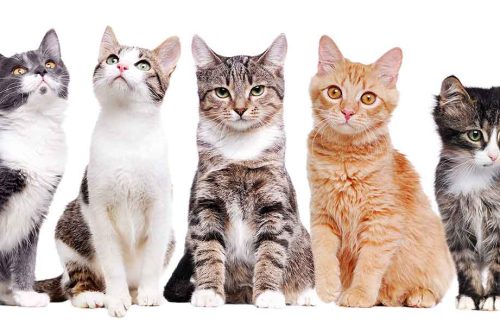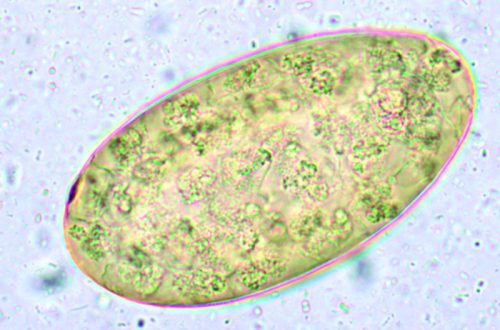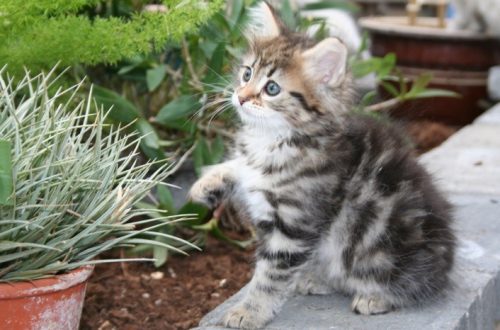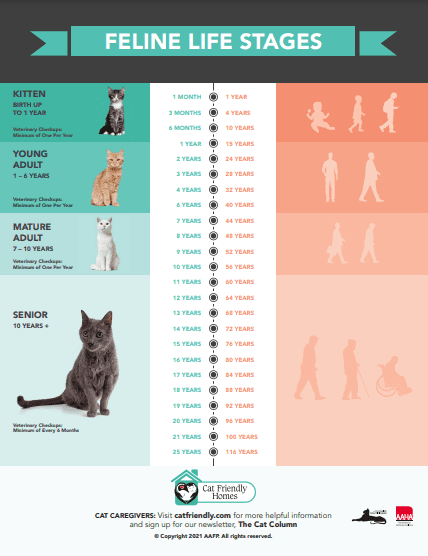
Hatua za ukuaji wa paka: toa utunzaji bora katika umri wowote
If you think about the stages of a cat’s life, then you will probably divide it into a cat’s childhood, adulthood, and old age. You may also think that caring for an adult cat is not much different than caring for a young cat. If so, you will be surprised to know that according to International CatCare, cats go through six separate life stages, each requiring specific care and nutrition. In this article, you will learn what stage of life your cat is in and how you can provide the best care and nutrition for her age. Keep in mind that some cats reach maturity faster than others, so it’s important to check with your veterinarian to make sure your cat is getting the right nutrition for its age.
Yaliyomo
Kitten (zero to six months old)
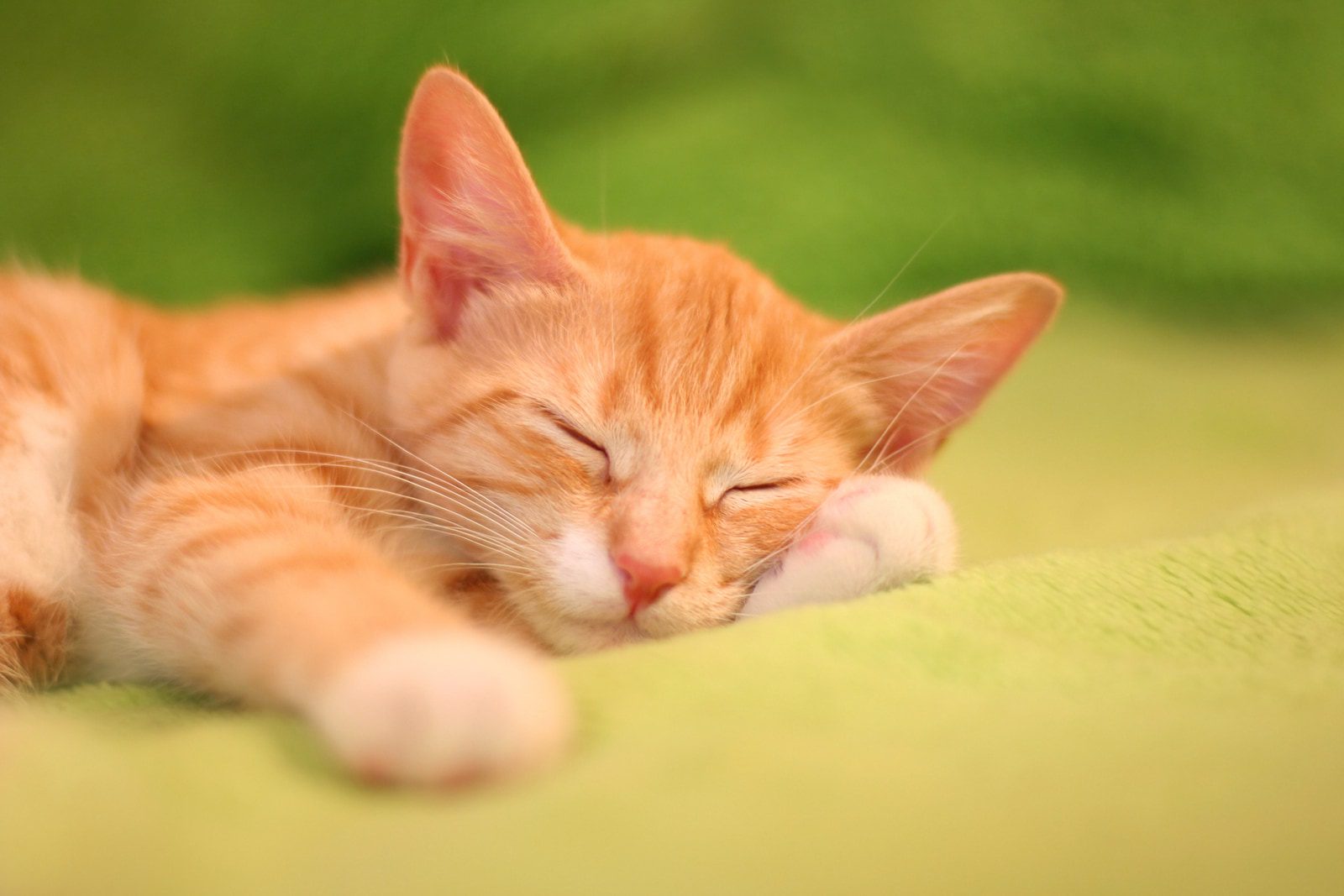
A kitten is the feline equivalent of a human baby. However, kittens grow and develop much faster than our children. During the first six months of a kitten’s life, a kitten goes through stages quite quickly, similar to those of a human child, from newborn and toddler to preschooler and large child.
- Kuonekana Kittens are easy to identify. That’s what they look like: like tiny baby cats. At the very beginning, they have shortened ears and a tail, which become more proportional to the body as their owner matures.
- Tabia. Kittens are constantly learning and discovering the world around them. At first, they are completely helpless and completely dependent on their mother and their human assistants for all aspects of care and protection. As they grow and develop environmental exploration skills, they are constantly driven by curiosity. In addition, due to the lack of fear and excess energy, kittens can be completely restless outrageous.
- Care and training. Typically, by the time you pick up a kitten, he will be completely weaned and able to eat solid food. He will also be agile and quite capable of climbing, jumping, playing and getting into trouble. And he has yet to learn that some things and activities do not suit him. Kittens require a lot of patience and supervision. Before taking a kitten home, you need to prepare your home for its arrival: block vents and other dangerous places that it can climb or crawl into, remove all cords and electrical cables from its reach, move indoor plants to where the kitten is will not be able to reach them, as well as securely fasten protective nets on the windows
Typically, by the time kittens are old enough to be picked up, they will have had their first vaccinations, but will be ready for a booster around four months of age. Discuss with your veterinarian the best time to spay or neuter your kitten. The veterinarian can discuss this situation as well as your kitten’s vaccination schedule at their first visit. He can also recommend the best methods for dealing with fleas and other parasites.
Your kitten will need to be taught how to use the litter box, although he understands everything instinctively and learns in due time the correct behavior from his mother, so training is mainly about helping him get used to the litter box. To do this, gently remind him where to go, putting him in the tray every time you think that he needs to go to the toilet. Otherwise, the training of kittens is aimed at its socialization, as well as at establishing house rules and boundaries of behavior.
- Nutritional needs. Growing kittens need enough protein to support growth and development, and a lack of it can lead to stunted growth and health problems. Kittens should be fed high quality kitten food that is specially formulated to support their rapidly growing bodies. Kittens have a fast metabolism, so they can be fed smaller meals more often than you would feed an adult cat. Just be sure to adjust your kitten’s feeding schedule as it grows to avoid overweight problems.
Young cat (seven months to two years old)
A cat’s youth corresponds to human adolescence. At this stage, the cat loses its childish appearance and reaches physical and sexual maturity. She also outgrows the personality traits of a kitten and finds her true temperament.
Appearance. When a cat stops being a kitten and moves into adolescence, she sometimes gets a little clumsy as she has growth spurts that can make her look long and skinny before her body is fully formed.
Behavior. Adolescence is a transitional stage in the life of a cat, during which she becomes more calm, stops being so mischievous and learns to behave like an adult. By the time she is about 18 months old, she will likely be much calmer.
Care and training. You must continue to vaccinate according to the schedule set by your veterinarian. As your pet grows older, it will require less and less supervision. Learning at this stage is usually associated with the consolidation of rules and boundaries and further socialization.
Nutritional needs. At the age of one year, it will be necessary to switch the cat from kitten food to adult cat food. Whether to feed her dry adult cat food or canned (wet) food is a matter of personal preference. In any case, the standard formula for adult animals should meet all her nutritional needs. It is not uncommon for cats at this stage to put on weight after spaying or neutering, so care must be taken not to overfeed her. Your veterinarian should explain to you “step by step” what to expect after the procedure if you decide to neuter your cat.
Young cat (three to six years old)
At this stage, your cat is in the prime of life, much like a human being in their 20s or 30s.
- Appearance. The cat at this stage is at the peak of health and fitness. She reaches her maximum length and height, and her graceful body with a healthy and shiny coat should be slightly rounded, but without excess weight.
Behavior. At this point, your cat should have finally formed its natural adult temperament. In the absence of any behavior-altering disease or disorder, the character traits that an animal exhibits now will remain with him for the rest of his life. The cat should be active and playful and have well-established habits and territory.
Care and training. Despite the fact that the pet is at the peak of its health, care for it should still include regular examinations. She should be well-mannered by this point, though she may test boundaries from time to time and needs to be gently reminded of the rules on those occasions. If the cat still hasn’t outgrown the problem behavior at this stage, you may need to see a professional trainer for help correcting the behavior, as well as consult with a veterinarian to make sure the unwanted behavior is not medically motivated. If you choose to adopt an adult cat, you can still train it. Cats, unlike dogs, are more independent by nature, so it may seem difficult to train a pet, but it is absolutely possible, so just be patient with her.
Nutritional needs. Your cat may continue to eat standard adult cat food at this stage, provided she does not develop any special health problems that require a special diet.
Adult cat (XNUMX to XNUMX years old)
An adult cat roughly corresponds to a person of average age 40-50 years.
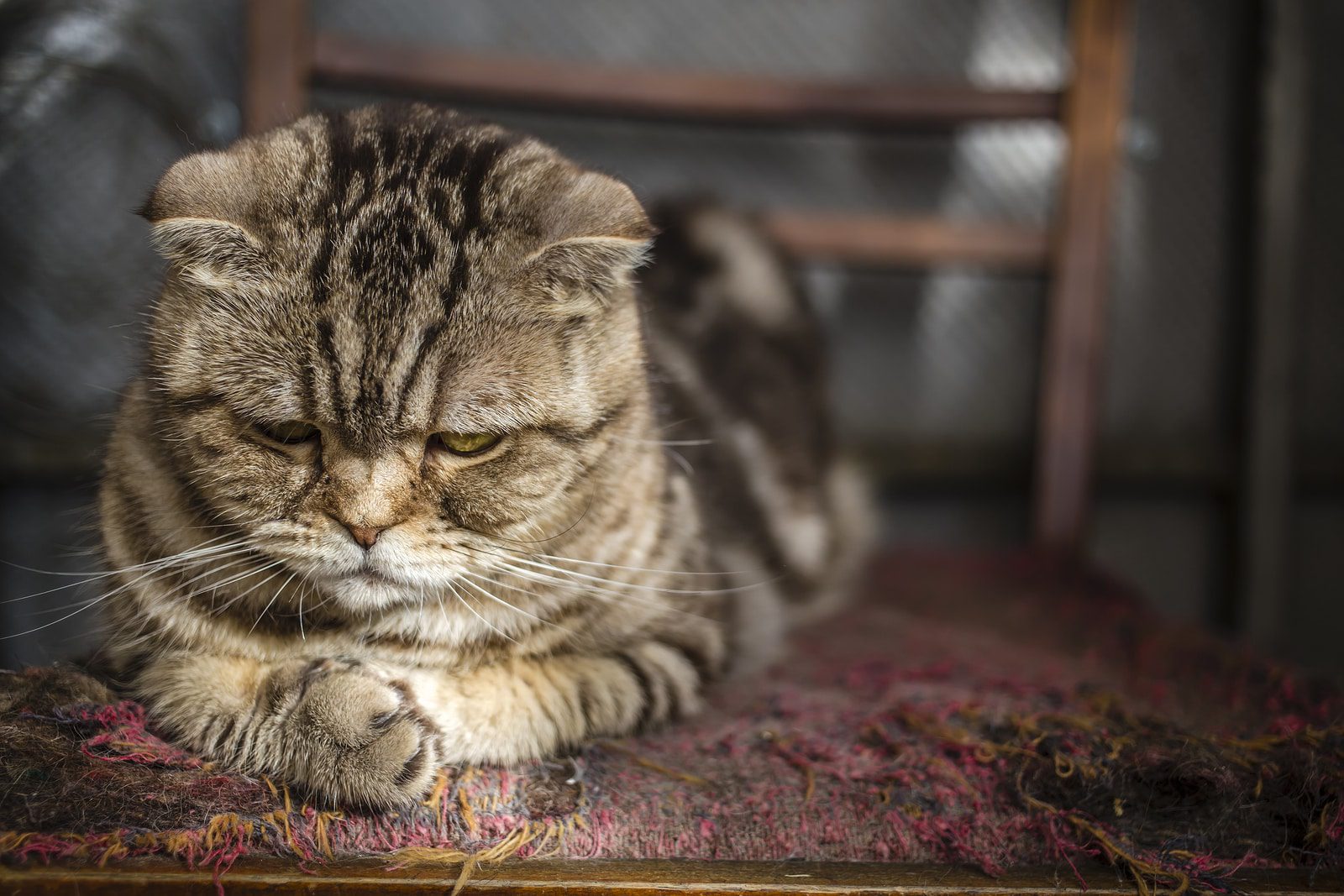
Appearance. Outwardly, your adult cat may look no different from a cat in his prime, especially if he remains active. However, animals in this life stage are more likely to gain weight and become obese, so it’s not unusual for a cat to put on weight and its coat to become less shiny.
Behavior. Although some pets remain active and playful even into old age, it is not unusual for an adult cat to become more calm and passive.
Care and training. As with a younger cat, you may occasionally need to reinforce training, but not often. Caring for animals at this stage is more challenging, as they are not only at greater risk of obesity and related health problems such as diabetes and high blood pressure, but also at greater risk of cancer and other diseases such as kidney or thyroid disease. . Take her to the veterinarian regularly for checkups and monitor her closely at home for signs of illness such as weight loss, unusual vomiting or diarrhea.
Nutritional needs. Adult cats need a certain set of nutrients to keep their body in perfect shape. It includes vitamins C and E to support the immune system. If she tends to gain weight, you may need to adjust her diet to suit her activity level.
Elderly and aged cats (XNUMX years and older)
Cats in old age go through two life stages. Cats that are between eleven and fourteen years old are considered seniors, which roughly corresponds to a human in their 60s and 70s. Cats fifteen years of age or older are considered seniors.
Appearance. Older cats are likely to show signs of aging, such as more and more graying of the coat, and the coat in general will lose its luster. These features may become more pronounced as we age.
Behavior. Cats in these later stages of life are increasingly susceptible to disease and pathology, and are prone to mobility problems caused by arthritis or other joint complications. This can cause your cat to move much more slowly and may also stop using the litter box, especially if it has high walls that it is difficult for her to climb over or is in a hard to reach place. Animals later in life are also at risk for senile dementia. This can cause them to forget how to use the litter box or even forget to eat or drink. According to the College of Veterinary Medicine at Cornell University, cats with dementia often become restless and may express their excitement with loud yells.
Care and training. Caring for elderly and aged cats can be a daunting task. You should continue to take your aged pet regularly for checkups and keep a close eye on her for health problems. The main thing at this stage is to create comfortable conditions for her and maintain her health for as long as possible. Make sure she can get in and out of the litter box easily and that food and water are easily accessible. If she shows signs of dementia, you may need to remind her throughout the day to eat and drink. Many aging cats can live long enough to remain active into old age, they just won’t play as long now. The good news is that she may now enjoy cuddling more, which will further strengthen your bond.
Nutritional needs. If she develops health problems, your veterinarian will prescribe a diet food for your cat as part of the treatment. Otherwise, a quality senior cat food should adequately meet all of her nutritional needs. If your pet is not drinking enough water, your veterinarian may recommend switching to wet food to help keep him hydrated.
As you can see, animals are constantly changing throughout their lives. By knowing your cat’s current stage of life, you can tailor your care accordingly to provide your cat with optimal health, nutrition and quality of life, so that you can experience the joys of living together.



